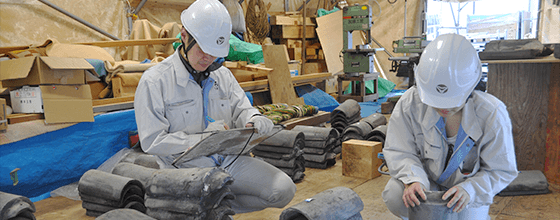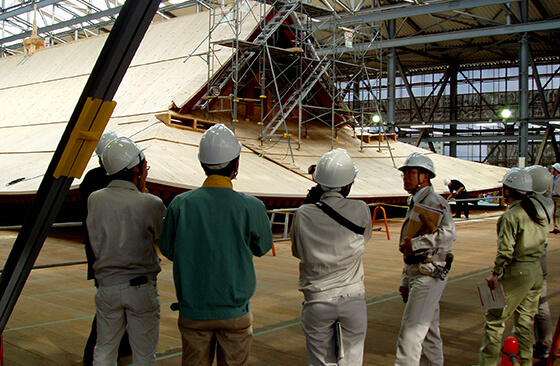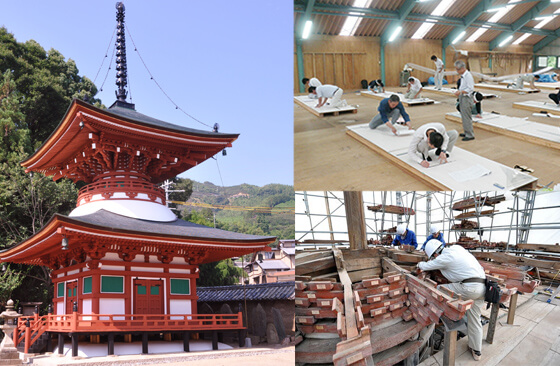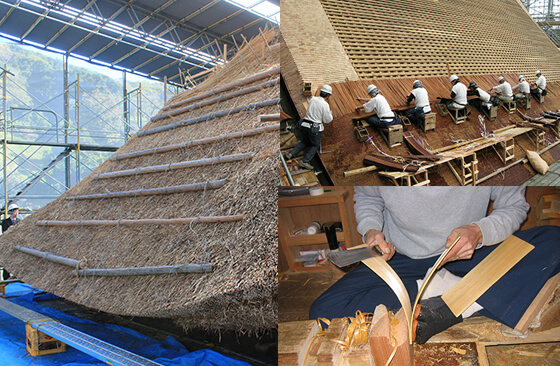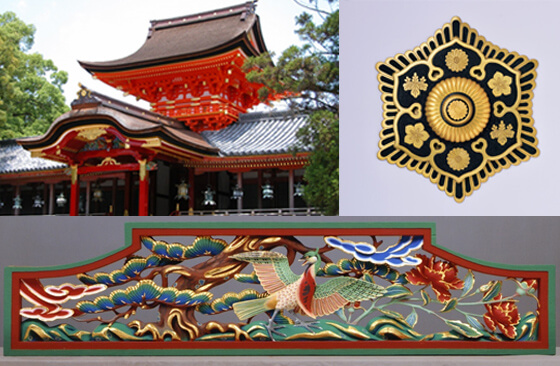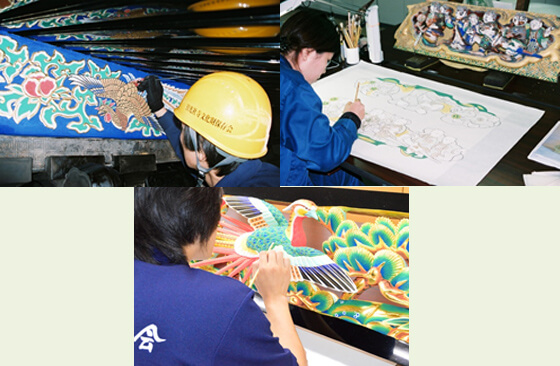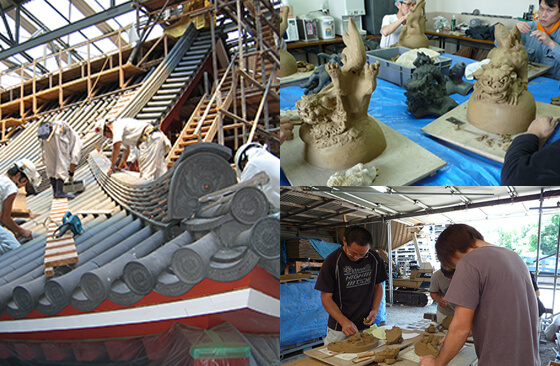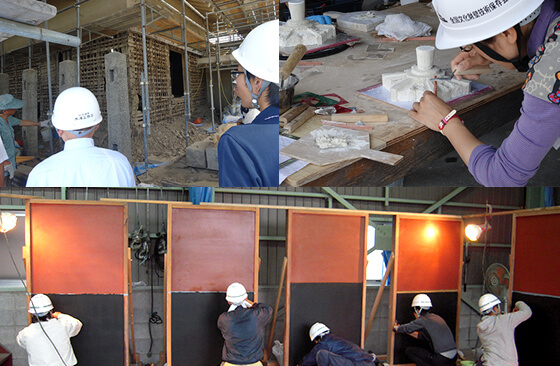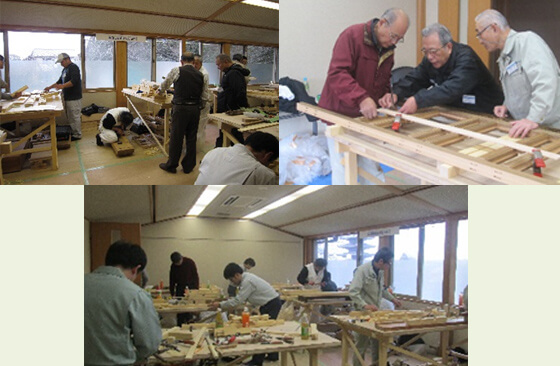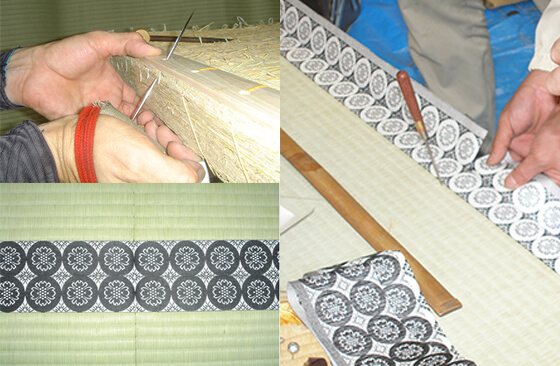Traditional Techniques
TRADITIONAL TECHNIQUES FOR CONSERVATION
The traditional techniques that are applied to the conservation of heritage buildings have been handed down from generation to generation by experienced craftspersons. Working day-to-day under skilled masters is essential for training such skilled workers. However, due to modernization of the Japanese lifestyle and building techniques, the demand for traditional work has decreased rapidly, and it is now difficult to maintain a sustainable business based on traditional techniques alone. In addition, the lack of young craftspersons, tools and toolmakers, and materials such as lacquer and straw, have become important challenges for their subsistence.
Read More
The traditional techniques that are applied to the conservation of heritage buildings have been handed down from generation to generation by experienced craftspersons. Working day-to-day under skilled masters is essential for training such skilled workers. However, due to modernization of the Japanese lifestyle and building techniques, the demand for traditional work has decreased rapidly, and it is now difficult to maintain a sustainable business based on traditional techniques alone. In addition, the lack of young craftspersons, tools and toolmakers, and materials such as lacquer and straw, have become important challenges for their subsistence.
Read More
